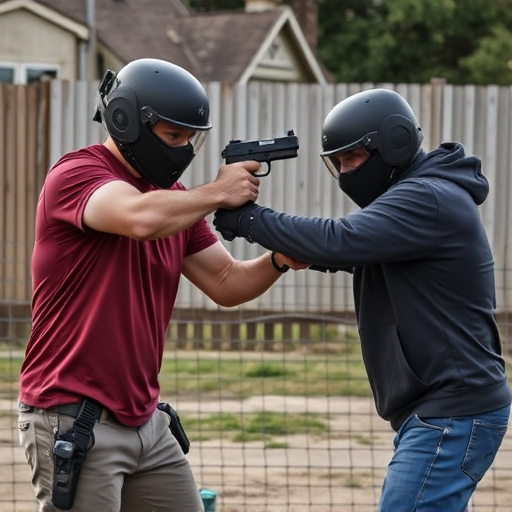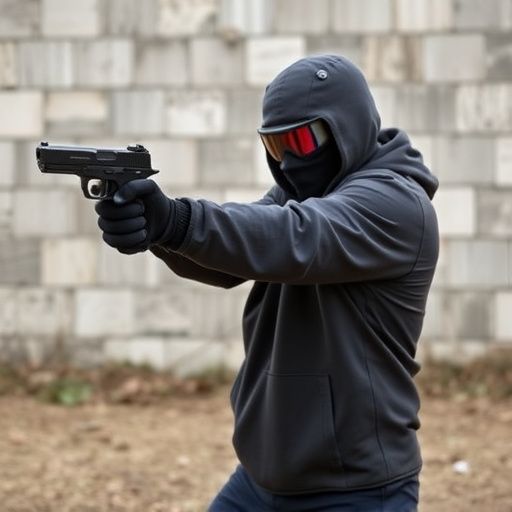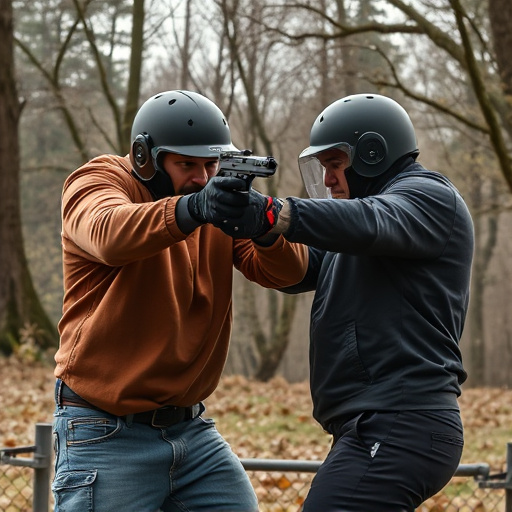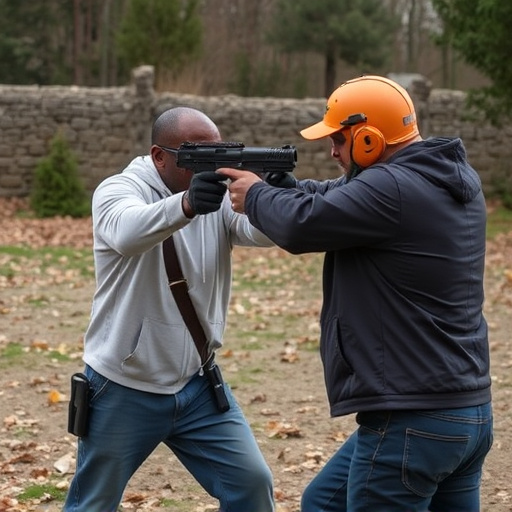Projectile vs Contact Stun Weapons: Carry, Use, & Legal Guide
Projectile stun weapons like stun guns and tasers temporarily disable targets through electrical sho…….
Projectile stun weapons like stun guns and tasers temporarily disable targets through electrical shocks, making them popular for personal protection due to their non-lethal nature. Contact stun weapons, such as stun guns, batons, and similar devices, require direct contact and can increase user injury risk. When choosing a stun device, prioritize ease of carry and use with compact, lightweight designs that fit comfortably in pockets or purses. Always check local regulations regarding the sale, possession, and use of stun weapons (electronic control devices) to avoid legal issues. Safety is paramount; users should undergo training, familiarize themselves with the device's functionality, and adhere to manufacturer guidelines for proper usage, storage, and maintenance.
In the realm of personal defense, stun weapons have emerged as game-changers. This article delves into the two primary types: projectile and contact stun devices. Understanding how they work and their unique advantages is crucial for folks seeking to protect themselves. We explore the direct impact of contact stun weapons and their disadvantages compared to projectiles. Additionally, we guide readers on choosing the right stun device with a focus on ease of carry and use, while also covering legal considerations and safety tips for responsible ownership. Remember that buying stun guns should be done thoughtfully, considering these factors for optimal self-defense.
- Understanding Projectile Stun Weapons: How They Work and Their Advantages
- The Contact Stun Weapon Approach: Direct Impact and Disadvantages Compared
- Choosing the Right Stun Device: Factors to Consider for Ease of Carry and Use
- Legal Considerations and Safety Tips for Owning and Using Stun Guns
Understanding Projectile Stun Weapons: How They Work and Their Advantages

Projectile stun weapons, such as stun guns or tasers, operate by delivering an electric current into the body’s nervous system, temporarily incapacitating the target. They work by firing a small projectile that makes contact with the skin and activates a probe or cartridge, which then releases a high-voltage, low-amperage electrical charge. This shock disrupts muscle control in the area, causing the individual to experience muscle spasms, disorientation, and temporary paralysis. The advantages of these weapons are significant for self-defense purposes. They offer a non-lethal alternative to firearms, allowing users to incapacitate an attacker without causing permanent harm or leaving behind deadly ammunition.
One key benefit is their ease of use; stun guns that are easy to carry and use are popular choices for personal protection. With just a simple trigger pull, individuals can defend themselves against potential threats, providing them with time to escape or summon help. This accessibility makes projectile stun weapons an attractive option for those seeking effective self-defense solutions without the complexity of traditional firearms.
The Contact Stun Weapon Approach: Direct Impact and Disadvantages Compared

The contact stun weapon approach involves direct physical impact to incapacitate a target, typically through a strong electric current or force. These weapons are designed to be easily accessible and user-friendly, encouraging individuals to buy stun guns for personal protection. Stun guns, batons, and similar devices are meant to be wielded close-range, delivering a powerful jolt that can temporarily paralyze an assailant, giving the user precious time to escape or summon help.
Despite their effectiveness in certain scenarios, contact stun weapons have distinct disadvantages. They require direct contact with the target, which can prove challenging in fast-paced or unpredictable situations. Furthermore, the close range needed for activation increases the risk of personal injury for the wielder. Moreover, successful deployment depends heavily on the user’s skill and strength, factors that may vary widely among individuals.
Choosing the Right Stun Device: Factors to Consider for Ease of Carry and Use

When selecting a stun device, ease of carry and use should be top priorities. Consider factors like size, weight, and grip design. A compact, lightweight stun gun that fits comfortably in a pocket or purse is ideal for everyday carry, offering quick access during unexpected situations. Look for models with ergonomic grips for secure handling, ensuring you can deploy the device without dropping it in moments of stress.
Additionally, user-friendly features like simple activation mechanisms and bright strobe lights enhance effectiveness. Some devices even offer additional tools like flashlights or knife functions, providing added versatility. Ultimately, buying a stun gun that is easy to carry and use allows you to stay prepared and confident, knowing you have a reliable tool at the ready when needed.
Legal Considerations and Safety Tips for Owning and Using Stun Guns

When considering the legal aspects of owning and using stun weapons, it’s crucial to understand the varying regulations across different jurisdictions. Stun guns, also known as electronic control devices (ECDs), are categorized under specific laws that govern their sale, possession, and use. Some regions permit their ownership with a permit or license, while others may restrict them to law enforcement agencies only. It’s essential for individuals planning to buy stun guns to research and comply with local legislation to avoid legal repercussions.
Safety is paramount when dealing with any type of weapon, especially non-lethal ones like stun guns. Users should prioritize training and familiarization with the device’s functionality and safety features. Stun guns designed for easy carry and use often come with compact sizes and ergonomic designs, making them discreet and convenient for personal protection. Always follow manufacturer guidelines for proper usage, storage, and maintenance to ensure both effectiveness and safety during emergencies or self-defense situations.
In exploring the realm of personal protection, both projectile and contact stun weapons offer unique solutions. Projectile weapons provide a tactical advantage with their range and non-lethal impact, while contact stun devices ensure immediate disruption through direct application. When deciding on a stun device, it’s crucial to balance effectiveness with ease of carry and use, especially in situations where quick deployment is vital. Opting for stun guns that are compact, ergonomic, and designed for everyday carry can offer peace of mind and increased safety without sacrificing performance. Always remember to familiarize yourself with local laws and prioritize safety when considering any self-defense tool, including stun devices.


